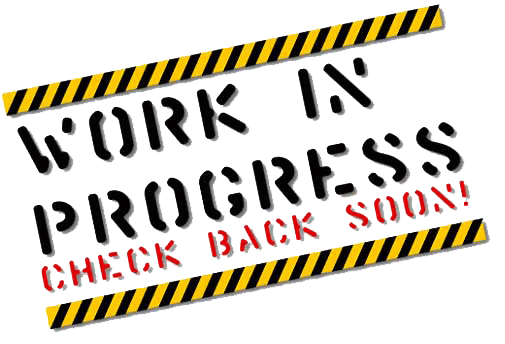
Art of Hosting: Additional Techniques
Introduction
Some of the techniques presented here are very close to the core of Aoh (basically the first two rows). Others, like Opera, are coming straight from the "problem solving" world. I still believe they have their place here because the underlying concept is the same (let's find a solution all together).Go to Top
Simple Design
The simplest design, according to Chris Corrigan:
Go to Top
Talking Piece
Have one :-)Go to Top
CheckIn/CheckOut
Checking In
Checking is done to put people "in the mood". Sample questions:- How am I feeling today
- Why are we are for
- One keyword which defines my relation to the project
Checking Out
Sample questions:- How am I feeling now
- What am I taking away with me
Go to Top
Sharp Questions
Wicked Questions
This is a game that prepares for powerful question and/or AL.People are in groups of 5, 3 seated, two observers standing.
Everybody has prepared a question.
One of the people seated read his questions and the other two ask questions in turn to clarify things or make the owner think.
At any moment one of the observer can replace one of the seated people by tapping on her shoulder.
After a given time, they turn to the next seated person question.
Powerful Questions
Or open question are why, when, how,who, etc. The previous game and AL make extensive use of powerful questions. It takes a while to learn to use and formulate them, but they are an essential tool of the trade. Questions can be used at any time to clarify purpose (stepping stones), to get the circle to think, or needed in Appreciative Inquiry or in the preparation phase of a constellation.The art of powerful question (french version)
Choose your questions wisely: a cross with Appreciative Inquiry.
Go to Top
Action Learning
Actors:- problem owner
- facilitator
- scribe
- assumptions
- powerful questions
- big picture
rephrase question
20'
Go to Top
Story telling
The idea being that this is coupled with a group harvesting.Go to Top
Landscape
The landscape is a graphical representation of the day / workshop / seminar. It is meant to be a replacement for agendas.
Usually a big drawing with simple symbols like a path, a stream:
I am forever in debt to Monica who showed me that even I could draw simple things to illustrate/create a landscape.
I am forever in debt to Monica who showed me that even I could draw simple things to illustrate/create a landscape.
Go to Top
Focused Conversation
The focused conversation is one way to make sure you make the best use of the conversation you have.
It builds on principle from Action Learning on best using questions by dividing questions in several categories and making sure all categories are used for maximum coverage. Download this 11 pages pdf for a complete explanation of how best to implement it. See also here.
It builds on principle from Action Learning on best using questions by dividing questions in several categories and making sure all categories are used for maximum coverage. Download this 11 pages pdf for a complete explanation of how best to implement it. See also here.
Go to Top
Six Thinking hats (deBono hats)
Go to Top
Ritual Dissent
small groups of 3-5 per table.First round to find solution and elect representative.
Representative then change table and explains to the next table what his group found (in 3 min)
Then table bashes (dissent) or improves (assent)
Aleternately, you can have a project owner explaining his project to the group, then having the group shredding it to pieces. This works best when you have several projects submitted in parallel, then rotating.
I have seen the technique used in two different ways:
1) letting people freely choose between dissent and assent
2)Forcing a dissent round, then an assent
I like the latter better. I found out that when people have discharged the negative energy, they are usually more creative in the assenting phase.
For me this is a simplified version of the De Bono Hats.
See also:
Ritual Dissent
Go to Top
Opera
Opera is a very simple way to produce quickly a consensus.- People work on their Own to find a certain number of answers.
- They work in Pair and have to produce the same number (ie each must give and take, unless there is common ground.
- Answers are put on the wall and Explained to the group by each pair.
- Answers are Rated by each pair, with a certain number of votes and interdiction to vote for your solution.
- Solutions are Aggregated and sorted to define the winners
See also:
Opera
Go to Top
Graphic facilitation
- Divide participants in smaller groups
- Each group futher divided into 4 subgroup
- Subgroup A and B, independently, illustrate on flipchart barriers to implementation
- Subgroup C and D, independently, illustrate on flipchart helpers to implementation
- Each subgroup appoints 2 hosts
- Hosts stay with their flipcharts, all other swap group barriers => helpers and vice-versa
- Team C must identify and resolve barriers identified by A. Hosts harvest solution. Ditto for D/B
- Team A must identify helpers drawn by C and determine how to implement them. Hosts harvest solution. Ditto for B/D.
- Hosts records ideas and ask teams to vote on best in each group
- Host work together (A and B, C and D) to consolidate the top voted ideas on flipcharts and present later in plenary
Go to Top
Constellation
In a Systemic Constellation, the host first talks to the problem owner to try and identify the elements that constitute the problem. Then the people present in the room are asked to represent the different elements and to freely react (as an improvisation) while the host and the problem owner sit back. The idea is that- the participants will somehow sense what the elements they represent would do and act like it and
- the free interaction of the problem elements will give the problem owner the solution (s)he needs.
Go to Top
Communities of Practice
Sharing with other practitionners.Go to Top
The future, backwards
Full descriptionBasically, you have one or several teams (5-10 people), with several colored small sheets.
- Current State (CS)
- Turning points backwards from CS
- Heaven
- Hell
- Turning points backwards from heaven
- Turning points backwards from hell
- Accidents on hell or heaven pathway
- Current State (CS)
- Heaven
- Hell
- Accidents on pathway
- Describe the current situation.
- Turning point that led to it
- Imagine an IMPOSSIBLY good future (Heaven)
- Imagine an IMPOSSIBLY bad future (Hell)
- Turning point that led to Heaven
- Turning point that led to Hell
Go to Top
Belbin
This is a copyrighted technique, property of the Belbin Associate, so I shouldn't really advertise it, and leave it to specialist. You can find more info about the team role inventories on the website. However, this is based on real science, unlike some other team role systems, and it is definitely worth investigating if you need to solve group relationship problems or simply want to optimize/maximize the results of a group. When dealing with groups, you can also have a look at what makes people tick.Go to Top









